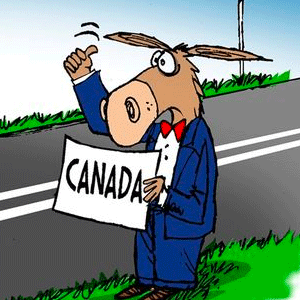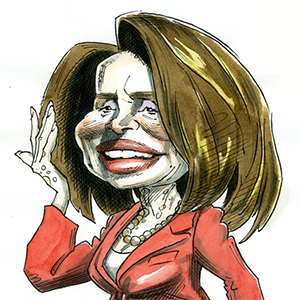Trump administration seeks to narrow Endangered Species Act by redefining 'harm'
Published in Science & Technology News
The Trump administration on Wednesday proposed a rule to redefine what it means to “harm” a protected species under the Endangered Species Act, a move conservationists say will strip vulnerable plants and animals of habitat they need to survive.
The proposal advanced by the U.S. Fish and Wildlife Service and National Marine Fisheries Service would limit the meaning to taking direct action to kill or injure endangered or threatened wildlife — removing the prohibition against habitat destruction that leads to those ends. It fits with White House officials’ intent to spur economic growth by slashing regulations.
If adopted, the change could significantly curtail the reach of the Endangered Species Act, passed in 1973 under former President Nixon. It would also flout a 1995 U.S. Supreme Court ruling that upheld the definition of harm to encompass “significant habitat modification or degradation.”
“What they’re proposing will just fundamentally upend how we’ve been protecting endangered species in this country,” said Noah Greenwald, co-director of endangered species at the Center for Biological Diversity, a conservation group.
According to Greenwald, the previous definition prevented acts like cutting down swaths of old-growth forests in Northern California and the Pacific Northwest where federally threatened northern spotted owls nest and roost. Or filling in a wetland inhabited by red-legged frogs, California’s state amphibian also listed as federally threatened.
Under the proposed meaning, it would take something like the actual shooting of an owl to qualify, he said.
“I think there would just be a lot more room for timber companies to log their habitat without concern,” he said. Given the owls’ precipitous decline in recent decades, “this potentially could be the nail in the coffin,” he added.
The concept of harm in the Endangered Species Act is wrapped up in its prohibition of “take,” which means “to harass, harm, pursue, hunt, shoot, wound, kill, trap, capture or collect” a species protected by the law.
“This makes sense in light of the well-established, centuries-old understanding of ‘take’ as meaning to kill or capture a wild animal,” the FWS and NMFS wrote in proposing the revision, adding that current regulations “do not match the single, best meaning of the statute.”
Publishing the proposed rule in the Federal Register — set for Thursday — triggers a 30-day public comment period. Once the public comments are analyzed, a final rule could be issued in a matter of months.
If the change is made, Greenwald said his group would challenge it in court.
The proposed change comes amid a flurry of actions by the Trump administration to push for more development and resource extraction on public lands, which conservationists believe will harm wildlife, among other deleterious effects.
Earlier this month, the Trump administration ordered the immediate expansion of timber production in the U.S. It was followed by an emergency declaration by U.S. Secretary of Agriculture Brooke Rollins mandating the U.S. Forest Service to open up roughly 112.5 million acres of national forestland to logging.
A February order by Secretary of the Interior Doug Burgum directed his staff to review and possibly alter national monuments as part of a push to expand U.S. energy production.
_____
©2025 Los Angeles Times. Visit at latimes.com. Distributed by Tribune Content Agency, LLC.







Comments